tabanan
Tabanan is situated on the western part of the island and is known for its lush landscapes, terraced rice fields, beautiful beaches, and traditional Balinese culture. Here's some information about Tabanan Regency:
Geography: Tabanan Regency covers an area of approximately 839 square kilometers (324 square miles) and is bordered by Jembrana Regency to the west, Badung Regency to the east, and the Bali Sea to the north. It is surrounded by mountains, including Mount Batukaru, one of Bali's highest peaks.
Culture and Traditions: Like the rest of Bali, Tabanan Regency has a rich cultural heritage deeply rooted in Hinduism. Traditional ceremonies, dance performances, and various cultural events are an integral part of the local way of life. The regency is home to several ancient temples, such as Tanah Lot, which is one of the most iconic and photographed temples in Bali.
Agriculture: Tabanan is renowned for its picturesque rice terraces, which are cultivated using traditional subak irrigation systems. The landscapes of Jatiluwih, a UNESCO World Heritage Site, showcase the stunning beauty of these terraced rice fields.
Tourism: While not as touristy as some other regions in Bali, Tabanan offers a more authentic and rural experience for visitors. It's a great place to explore the countryside, discover local traditions, and escape the crowds. Some popular tourist attractions in Tabanan include Tanah Lot Temple, Jatiluwih Rice Terraces, Alas Kedaton Monkey Forest, and Pura Luhur Batukaru.
Beaches: Tabanan Regency has several beautiful black sand beaches on its western coast, providing a more secluded and serene beach experience compared to the busier beaches in the southern part of Bali.
Agriculture and Livelihood: Agriculture, including rice cultivation, remains a significant source of livelihood for the local population. Besides rice, other crops like coffee, cocoa, and vegetables are also grown in the region.
Transportation: The main transportation hubs in Tabanan are the town of Tabanan and the city of Denpasar, the provincial capital of Bali. From Denpasar, you can reach Tabanan Regency by car, taxi, or public transportation.
History
Tabanan Regency has a rich historical background, deeply interwoven with the cultural and religious heritage of Bali. The regency's history dates back centuries, shaped by a series of influential dynasties, the spread of Hinduism, and the development of agriculture. Here are some key points about the history of Tabanan Regency:
Ancient Bali: The history of Bali, including Tabanan, is shrouded in legend and myth. Ancient Bali was divided into small kingdoms ruled by local chieftains. One of the earliest known kingdoms was the Warmadewa Dynasty, which ruled around the 10th century. During this time, Hinduism began to spread across the island, laying the foundation for Bali's unique blend of culture and religion.
Majapahit Influence: In the 14th century, Bali came under the influence of the mighty Majapahit Empire, centered on the island of Java. Majapahit rulers, who were devout Hindus, significantly contributed to the growth of Hindu-Balinese culture and traditions. During this period, many temples and cultural landmarks were constructed, some of which can still be found in Tabanan Regency today.

Kingdom of Tabanan: The exact date of the establishment of the Tabanan Kingdom is not well-documented, but it is believed to have been one of the prominent kingdoms on the island during the 16th and 17th centuries. The kingdom flourished under the rule of various kings and was renowned for its agricultural wealth and fertile lands.
Dutch Colonial Period: In the 19th century, the Dutch East India Company (VOC) gradually expanded its influence over the Indonesian archipelago, including Bali. The Dutch colonialists sought to control the lucrative spice trade and gradually gained control over the island's various regions, including Tabanan.
Dutch-Balinese Wars: The Dutch encountered resistance from the Balinese kingdoms, including Tabanan, which led to a series of armed conflicts known as the "Puputan." The Puputan of Tabanan took place in 1906 when the local Balinese royals, along with their followers, chose to commit mass ritual suicide (puputan) rather than submit to Dutch rule. This event remains a significant part of Bali's history and is commemorated to this day.
Integration into the Indonesian Republic: After Indonesia's independence in 1945, Bali, including Tabanan Regency, became part of the newly formed Indonesian Republic. Over the years, the regency has seen modernization and development while also preserving its unique cultural identity.
Agriculture and Rice Cultivation: Throughout its history, Tabanan has been primarily an agricultural region, with rice cultivation being the main economic activity. The intricate subak irrigation system, managed collectively by local farmers, has played a crucial role in maintaining the fertility of the rice fields.
Today, Tabanan Regency continues to hold on to its cultural heritage while embracing modernity. It remains an important part of Bali's tourism industry, offering visitors a glimpse into the island's traditional life, stunning landscapes, and ancient temples.
Tabanan city
Tabanan City is the capital and administrative center of Tabanan Regency. It is one of the main urban areas in the regency and serves as an important hub for commerce, government, and services.
Location: Tabanan City is situated in the western part of Bali, approximately 30 kilometers (18.6 miles) northwest of Denpasar, the provincial capital. It is bordered by lush rice fields and is in close proximity to some of Bali's popular tourist destinations.
Administration: The city serves as the administrative headquarters of Tabanan Regency. It houses government offices, including the regent's office, local government departments, and other administrative institutions.
Economy: While the city's economy is diverse, agriculture remains a significant contributor, much like the rest of the regency. The fertile lands surrounding the city support rice cultivation and the growth of various crops, contributing to the agricultural prosperity of the area. Additionally, Tabanan City benefits from trade and commerce due to its role as a central location in the regency.
Transportation: Tabanan City is well-connected to other parts of Bali. It is accessible by car, taxi, or public transportation from Denpasar and other major towns. The city has a bus terminal that serves as a transit point for buses traveling between different regions in Bali.

Facilities and Services: Being the capital of Tabanan Regency, the city offers various facilities and services to its residents and visitors. These include schools, healthcare centers, markets, banks, and other amenities essential for daily living.
Traditional Markets: Tabanan City is home to several traditional markets where locals and tourists can buy fresh produce, clothing, handicrafts, and other items. Pasar Anyar is one of the most popular markets in the city.
Cultural Heritage: While not as touristy as some other areas in Bali, Tabanan City still showcases the island's rich cultural heritage. Temples, traditional ceremonies, and cultural events are part of the local way of life.
Tourist Attractions: While the city itself may not be a major tourist destination, its strategic location allows visitors to explore nearby attractions in Tabanan Regency. Some examples in Tabanan city are The Subak Museum dedicated to the rice cultivation, and the Gedong Marya theatre, dedicated to the famous dancer Mario.
Alas Kedaton Temple
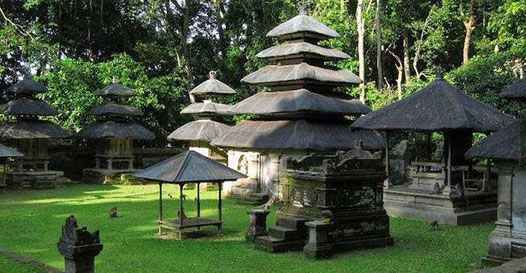
History:
The exact history of Alas Kedaton Temple is not widely documented, but it is believed to have ancient origins, dating back several centuries. Like many Hindu temples in Bali, Alas Kedaton holds cultural and spiritual significance for the local community. It is one of the many temples that contribute to Bali's rich cultural heritage and traditional practices.
Animals:
One of the unique features of Alas Kedaton Temple is its association with monkeys and bats. The temple is surrounded by a dense forest, which is inhabited by a large population of long-tailed macaque monkeys. These monkeys are considered sacred and are an essential part of the temple's spiritual and cultural ambiance. Visitors can often observe the monkeys roaming freely within the temple grounds.
Near the village of Kukuh, an ancient temple is located in this 12 hectares forest that houses both monkeys and large bats.
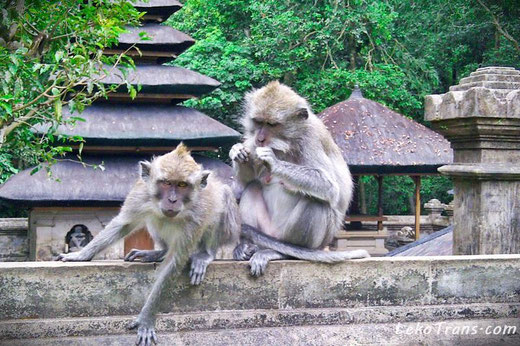
Additionally, the temple is also known for being home to a colony of fruit bats, which are a fascinating sight to see, especially during their active hours when they venture out of their roosts to find food.
Tourism:
Due to its association with monkeys and bats, Alas Kedaton Temple has become a popular tourist attraction in Bali. Visitors are drawn not only to the religious and cultural aspects of the temple but also to observe and interact with the friendly and mischievous monkeys that inhabit the area.
When visiting Alas Kedaton Temple, it's essential to show respect for the religious site and the local customs. Visitors are often required to wear traditional sarongs and sashes as a sign of respect, and they are advised not to provoke or feed the monkeys to avoid any incidents.
Batukaru
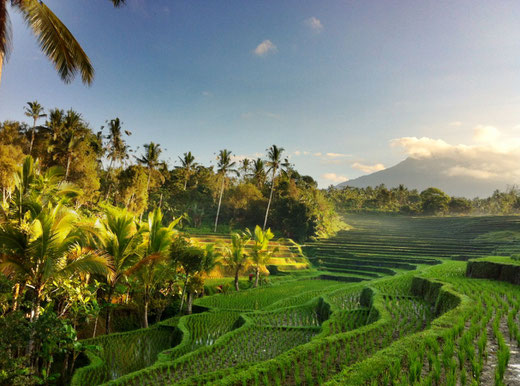
Mount Batukaru, also known as Gunung Batukaru, is a volcanic massif located in Tabanan Regency.
Highest Peak: The highest peak of Mount Batukaru stands at approximately 2,276 meters above sea level. It is the second-highest mountain on the island of Bali, after Mount Agung.
Three Small Nature Reserves: Around the volcanic massif, there are three small nature reserves situated on and around the three smallest peaks:
a. Lesung: One of the small peaks is called Lesung.
b. Tapak: Another small peak is named Tapak.
c. Pohen: The third small peak is known as Pohen.
These nature reserves contribute to the conservation of the diverse flora and fauna found in the region, which includes various plant species and wildlife native to Bali's mountainous areas.
Mount Batukaru and its surroundings are part of a significant natural and cultural landscape in Bali. The mountain is considered sacred by the Balinese Hindus, and the area is dotted with temples and shrines. Pura Luhur Batukaru, located on the slopes of the mountain, is one of the most important temples on the island and attracts both pilgrims and tourists.
pura luhur batukaru
Pura Luhur Batukaru, also known as Batukaru Temple, is one of the most significant Hindu temples in Bali.
Location: Pura Luhur Batukaru is located on the southern slope of Mount Batukaru, within the Tabanan Regency of Bali. The temple is situated in the central-western part of the island, in the midst of lush forests and rice terraces.

Spiritual Significance: The temple holds great spiritual importance to the Balinese Hindus. It is one of the island's nine key directional temples that are strategically positioned to protect Bali from evil spirits and negative influences. Pura Luhur Batukaru represents the direction of the west and is associated with the element of air.
Serene Setting: The temple's location in the midst of the dense rainforest on the slopes of Mount Batukaru provides a serene and tranquil atmosphere. Surrounded by nature, the temple complex offers visitors a sense of peace and spirituality.
Unique Architecture: The architecture of Pura Luhur Batukaru is characteristic of Balinese Hindu temples. You can find various multi-tiered shrines adorned with intricate carvings, stone statues, and other decorative elements.
Pilgrimage Site: Balinese Hindus often make pilgrimages to Pura Luhur Batukaru, especially during important religious ceremonies and festivals. The temple attracts both locals and tourists interested in experiencing Bali's rich cultural and religious heritage.
Bratan Lake & Pura Ulun Danu Bratan
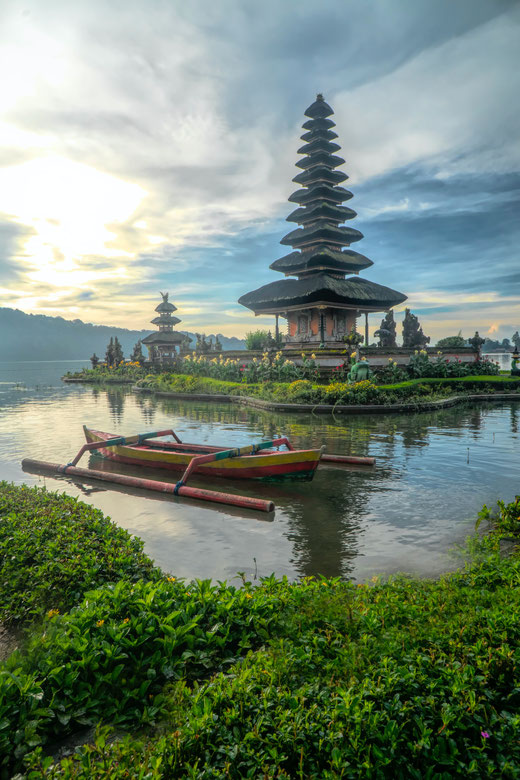
Lake Bratan is a picturesque volcanic lake located in Bali, Indonesia. It is one of the three lakes situated in the caldera of Mount Bratan and is known for its stunning beauty and serene surroundings.
Location: Lake Bratan, also known as Danau Bratan in Indonesian, is situated at an altitude of approximately 1,200 meters (3,900 feet) above sea level in the central part of Bali.
Scenic Beauty: The lake's charm lies in its crystal-clear waters and the backdrop of the surrounding mountains, particularly the majestic Mount Bratan and Mount Catur. It offers a tranquil and picturesque setting for visitors and is a popular spot for both tourists and locals.
Ulun Danu Beratan Temple: The most famous attraction on Lake Bratan is the Ulun Danu Beratan Temple, a Hindu water temple built on a small island near the western shore of the lake. This temple is dedicated to the goddess of the lake, Dewi Danu, and is one of Bali's most iconic landmarks.
Agricultural Importance: Lake Bratan and the surrounding areas are crucial for agriculture in Bali. The fertile lands surrounding the lake are used for cultivating various crops like fruits, vegetables, and flowers.
Pura Ulun Danu Bratan
Ulun Danu Beratan Temple, also known as Pura Ulun Danu Bratan, is one of Bali's most iconic and significant Hindu temples. It is located on the shores of Lake Bratan in the Bedugul area of Bali, Indonesia. The temple complex is dedicated to the goddess Dewi Danu, who is revered as the goddess of water, lakes, and rivers.
History and Origin:

The history of Ulun Danu Beratan Temple dates back to the 17th century, although some aspects of the temple might have earlier origins. The exact founding date is not well-documented, but the temple's establishment is attributed to the Mengwi King, I Gusti Agung Putu. He ruled the region of Mengwi, which was one of Bali's major kingdoms during that period.
The purpose of building the temple was to honor and pay homage to the goddess Dewi Danu, as the lake and its waters were essential for the irrigation of the surrounding rice fields and agriculture. The temple's location on the shores of Lake Bratan emphasizes the importance of water resources for the people of Bali.
The Architecture and Layout:
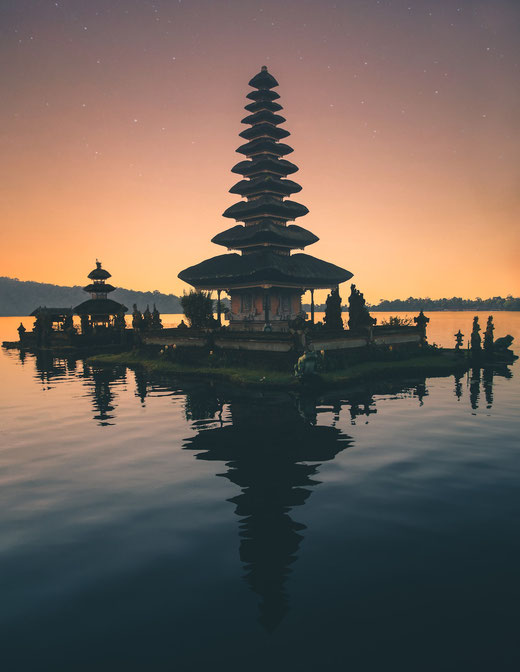
The temple complex of Ulun Danu Beratan is beautifully designed and features a unique architectural style that combines Hindu and local Balinese influences.
The main temple shrine is situated on a small rock island close to the lake's shore, and it appears as if it is floating on the water. The picturesque reflection of the temple on the lake's surface is a stunning sight, making it one of Bali's most photographed locations.
The temple complex consists of several shrines and meru towers, representing various deities and Hindu gods. The main meru tower is dedicated to Dewi Danu, and there are other smaller shrines devoted to different gods, including Shiva and Parvati.
Significance and Festivals:
Ulun Danu Beratan Temple holds great significance for the Balinese people. It is not only a place of worship but also a vital part of their cultural heritage.
The temple plays a crucial role in the traditional Subak irrigation system, which is a UNESCO World Heritage-listed cooperative water management system that dates back over a thousand years.
Various ceremonies and festivals are held at the temple throughout the year to honor Dewi Danu and seek blessings for bountiful harvests and a steady supply of water.
The temple's anniversary, known as the "Piodalan" ceremony, is celebrated every 210 days based on the Balinese Pawukon calendar.
bedugul & bali Botanic Garden
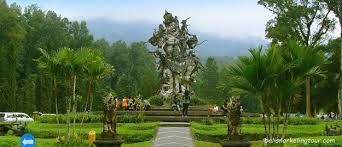
Bedugul is a popular mountain resort area located in the central highlands of Bali, Indonesia. It is known for its cooler climate compared to the coastal regions of Bali, making it a refreshing escape from the tropical heat.
One of the key attractions in Bedugul is the Bali Botanic Garden, also known as Kebun Raya Eka Karya. It is the largest botanical garden in Indonesia and is managed by the Indonesian Institute of Sciences. The garden is situated around 1,250 meters (4,100 feet) above sea level, providing an excellent environment for a diverse collection of plants from various regions and elevations of Indonesia.
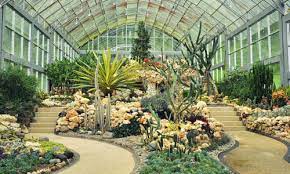
Here are some highlights of the Bali Botanic Garden:
Plant Diversity: The garden boasts an extensive collection of plants, including rare and endangered species. You can find over 2,400 species of plants, including orchids, ferns, medicinal plants, and a wide variety of tropical flora.
Ecosystems: Bali Botanic Garden showcases different ecosystems found throughout Indonesia, such as montane forests, rainforests, dry savannas, and aquatic gardens.
Bird Watching: Bird enthusiasts will enjoy the opportunity to spot numerous bird species within the garden. It's a great place for bird watching and observing various avian species in their natural habitat.
Recreational Activities: The garden offers various facilities and activities for visitors, such as trekking, picnicking areas, and a treetop adventure park, providing a fun experience for families and nature lovers.
Lake Beratan: Close to the Bali Botanic Garden is Lake Beratan, a picturesque lake with a temple called Pura Ulun Danu Bratan floating on its waters. This iconic temple is one of the most photographed landmarks in Bali and is a short distance from the garden.
Jatiluwih
Jatiluwih is a popular tourist destination located in the Tabanan Regency of Bali, Indonesia. It is renowned for its breathtaking rice terraces and stunning natural scenery, making it a UNESCO Cultural Landscape since 2012.
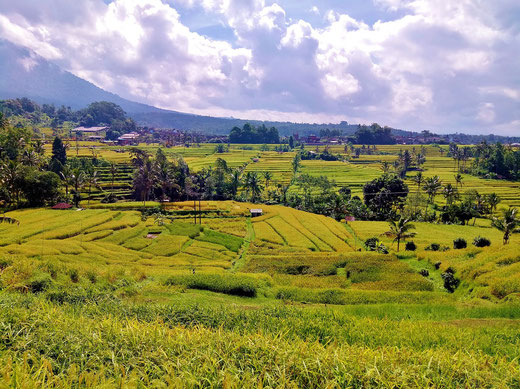
Rice Terraces: The area is famous for its picturesque rice terraces that cascade down the hillsides, creating a beautiful and serene landscape. The traditional Balinese Subak irrigation system is utilized to cultivate the rice paddies, which not only ensures the supply of water but also contributes to the unique aesthetic appeal.
Scenic Beauty: Visitors to Jatiluwih can enjoy captivating panoramic views of the lush greenery, tropical forests, and distant mountains. The terraced landscape is both impressive and calming, making it a great place for nature lovers and photographers.
Hiking and Trekking: There are several hiking and trekking trails in and around Jatiluwih, allowing tourists to explore the region's natural beauty up close. These trails often take visitors through local villages and the terraced rice fields.
Cultural Experience: Jatiluwih provides an opportunity to experience the traditional Balinese rural lifestyle. Visitors can interact with the friendly locals and get insights into their customs, agricultural practices, and spiritual beliefs.
Sustainable Tourism: The area has been recognized for its commitment to sustainable tourism practices, preserving the environment and the unique Balinese heritage.
Kerambitan
Puri Gede, Puri Anyar Baturiti, are two 17th century palaces of the former Tabanan royal family. Interesting stone carvings and antique Chinese porcelain plates embedded in the walls of the gong pavilions are among the various items of interest.
Marga
The National Monument of Margarana, also known as Taman Makam Pahlawan Margarana (Margarana Heroes Cemetery), is a significant historical site located in the village of Marga, Tabanan Regency, Bali, Indonesia. It serves as a memorial to honor the heroic sacrifice of the Balinese people during a crucial event in Indonesia's history.
The monument commemorates the Battle of Marga, which took place on November 20, 1946, during the Indonesian National Revolution. The battle was fought between the Indonesian independence fighters (Pemuda) and the Dutch colonial forces. The Balinese people bravely defended their land and resisted the Dutch occupation.

Tragically, during the battle, a large number of Balinese fighters lost their lives. The National Monument of Margarana was erected as a tribute to these fallen heroes, acknowledging their courage and commitment to the cause of Indonesian independence.
The centerpiece of the monument is a tall obelisk, symbolizing the strength and resilience of the Balinese people. Surrounding the obelisk, there are statues and memorial plaques dedicated to the individual heroes who died during the Battle of Marga.
The site is not only a symbol of remembrance but also serves as a place of national pride and unity, attracting visitors and locals alike who come to pay their respects and learn about this significant event in Indonesia's history.
The National Monument of Margarana stands as a reminder of the sacrifices made by the Balinese people and their role in the struggle for Indonesian independence. It holds a special place in the hearts of the Indonesian people and serves as a poignant symbol of their nation's resilience and determination.
Pujungan Waterfall
Pujungan Waterfall is a beautiful natural attraction located in the Tabanan Regency. It is one of the lesser-known waterfalls on the island, making it a tranquil and serene destination for nature lovers and adventure seekers.
Location: Pujungan Waterfall is situated in the northern part of Tabanan Regency, amidst lush greenery and rice terraces. The surrounding area is typically picturesque and offers a peaceful retreat away from the more crowded tourist spots.
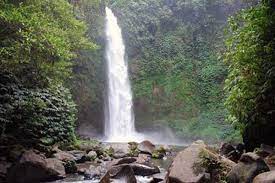
Accessibility: While Pujungan Waterfall is not as widely visited as some of the more famous waterfalls in Bali, it is still accessible. However, reaching the waterfall might require a bit of trekking or hiking through natural paths and possibly crossing streams, so appropriate footwear and physical fitness are recommended.
Natural Setting: The waterfall itself is known for its scenic beauty, with water cascading down from a moderate height into a clear pool. The surrounding vegetation adds to the enchanting atmosphere, making it an ideal place for nature photography and relaxation.
Swimming: The pool at the base of the waterfall provides an opportunity for visitors to take a refreshing swim in the cool, natural waters. However, as with any natural site, it's essential to be cautious, especially during the rainy season when water levels might rise.
Less Crowded: Compared to some of the more famous waterfalls in Bali, Pujungan Waterfall tends to receive fewer visitors. This is an advantage for those seeking a more tranquil and secluded experience with nature.
Conservation: Like many natural attractions, it's essential to respect the environment and maintain its cleanliness. Visitors are encouraged to practice responsible tourism by not leaving any waste behind and leaving the area as they found it.
Tanah Lot
Tanah Lot is a famous Hindu temple located on a rock formation off the coast of Bali, Indonesia. It is one of the most iconic landmarks on the island and a popular tourist destination.
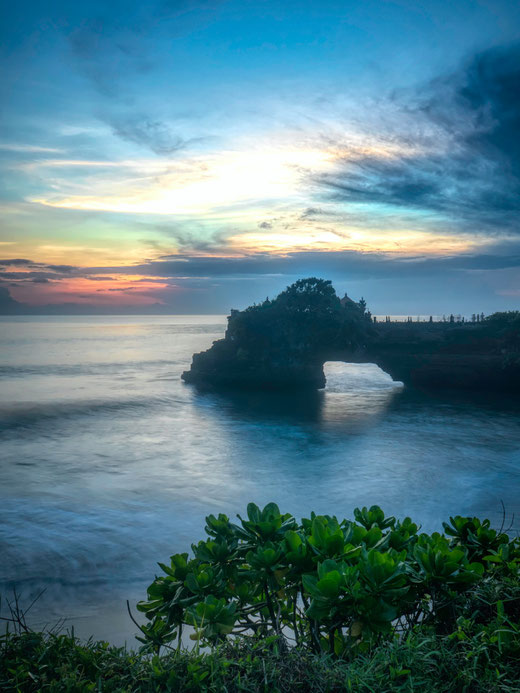
History:
The exact origins of Tanah Lot temple are not well-documented, but it is believed to have been built in the 16th century by the Javanese priest Nirartha, who played a significant role in shaping Bali's religious landscape. Legend has it that he arrived in Bali and decided to rest on the rocky outcrop where Tanah Lot temple stands today. He was captivated by the beauty of the location and decided to build a temple to honor the sea goddess Dewi Danu, who is considered the guardian of the sea.
Architecture and Location:
Tanah Lot temple is a sea temple, which means it is built on a rock formation in the Indian Ocean, a few hundred meters offshore. The temple's unique location adds to its allure, especially during high tide when it appears as if the temple is floating on the water.
The temple complex consists of two main shrines, with the larger one dedicated to Dewi Danu and the smaller one serving as a place of worship for the sea snakes, which are believed to guard the temple. The entire structure is built using traditional Balinese architecture, and its dark-colored stones contrast beautifully with the surrounding ocean and landscape.
Cultural Significance:
Tanah Lot is an essential part of Balinese culture and spirituality. It is considered one of the seven sea temples that form a ring around the Balinese coast, each established within eyesight of the next to form a sacred boundary. These temples are meant to honor the protective spirits of the sea and maintain the spiritual balance of the island.
For the Balinese, Tanah Lot is not only a place of worship but also an important cultural and pilgrimage site. The temple hosts various religious ceremonies and festivals, attracting both locals and tourists alike to witness the rituals and celebrations.
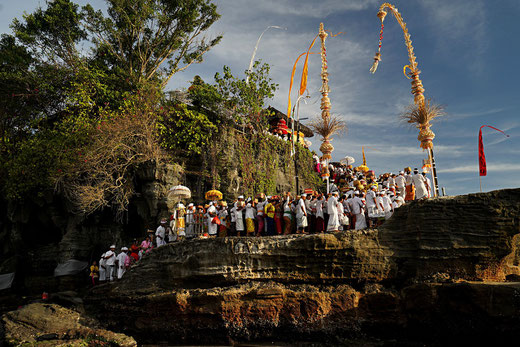
Tourism:
Due to its picturesque location and cultural significance, Tanah Lot has become a major tourist attraction in Bali. Visitors come to admire the temple, especially during sunset, when the view becomes incredibly scenic. However, the popularity of the site has led to some challenges, including environmental concerns and the need for preservation efforts.
Over the years, the erosion of the rock on which the temple stands has raised concerns about its stability. To address this issue, restoration and conservation measures have been taken to ensure the temple's longevity and protection.
In conclusion, Tanah Lot temple holds immense historical, cultural, and religious importance in Bali. Its unique location and stunning beauty have made it an iconic symbol of the island, attracting tourists and pilgrims from all over the world.
Yeh Panas & Penatahan Hotsprings
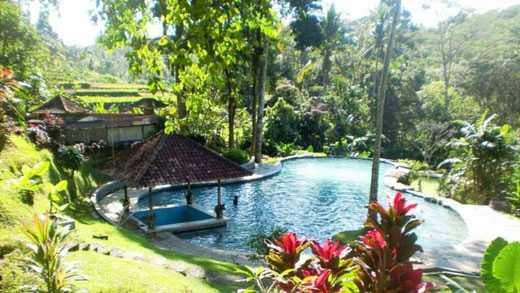
Penatahan Hot Spring is a natural hot spring area located in the village of Penatahan, which is situated in the northern part of Tabanan regency.
The Penatahan Hot Springs are renowned for their warm and therapeutic waters, which are believed to have healing properties due to their mineral content. These hot springs have been a popular destination for both locals and tourists seeking relaxation and relief from various ailments.
Visitors to Penatahan Hot Springs can enjoy soaking in the naturally heated pools, which are surrounded by lush tropical vegetation and scenic views. The area offers a serene and peaceful atmosphere, making it an ideal place to unwind and rejuvenate.
As with any natural attraction, it is essential to respect the environment and follow any rules or guidelines set by the local authorities to preserve the beauty and integrity of the hot springs.
Pejaten
A tradition of earthenware pottery-making has for centuries kept the village of Pejaten busy making useful pots, tiles and ornaments from fire- baked clay. The fragility of the pots ensures both continual supply and demand, and they are used all over the island. In the last few years a foreign aid project within the village has set up a new sophisticated kiln and fully equipped studio where the youth of the village are trained in the application of glazes, opening up a complete new market in durable kiln-fired ceramic ware.
Bali Butterfly Park
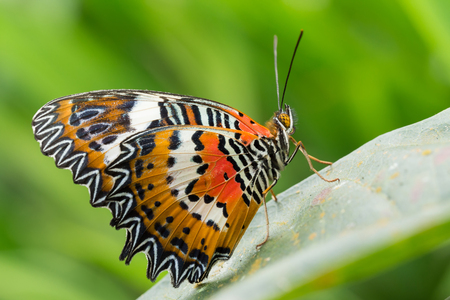
The Bali Butterfly Park, also known as Taman Kupu-Kupu Bali, is located in Wanasari, 6.5 kilometres north of the Tabanan regency and is easy to spot with a large sign out the front.
It is the largest of its kind in Asia with an area of 3000 sq. metres and welcomes thousands of visitors each year.
Bali Butterfly Park, Location Map, Cost of Admission & Opening Hours
The park is a butterfly and insect conservation facility which exhibits a number of specimens throughout the park grounds.
The butterfly park is an excellent stopover on excursions to the northern region of the island through Tabanan.
Families coming to the park will receive an educational tour where they will see hundreds of butterflies including some rare Indonesian species of butterfly.
Visitors have the privilege of seeing the colorful protected specimens such as the bird wing, Bali peacock and the majestic paradise bird wing. There are also other insects on display including scorpions, stick insects, spiders and beetles.
Although not a large park, it is perfect for families as it is spacious and well planned. Kids will be able to see butterflies as they cocoon and emerge as beautiful butterflies. You will have many photo opportunities, so make sure to bring your camera.
comments
This list is for sure not complete. We welcome your comments and encourage you to share additional touristic, cultural, or historical facts about this regency. Your insights will benefit other readers visiting this page.

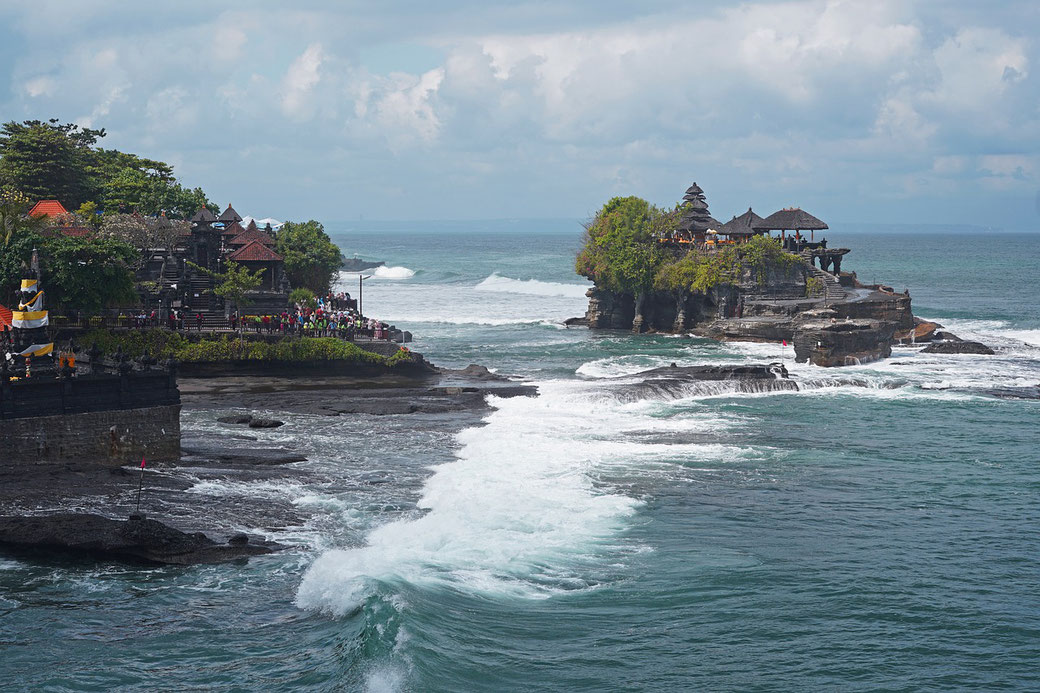

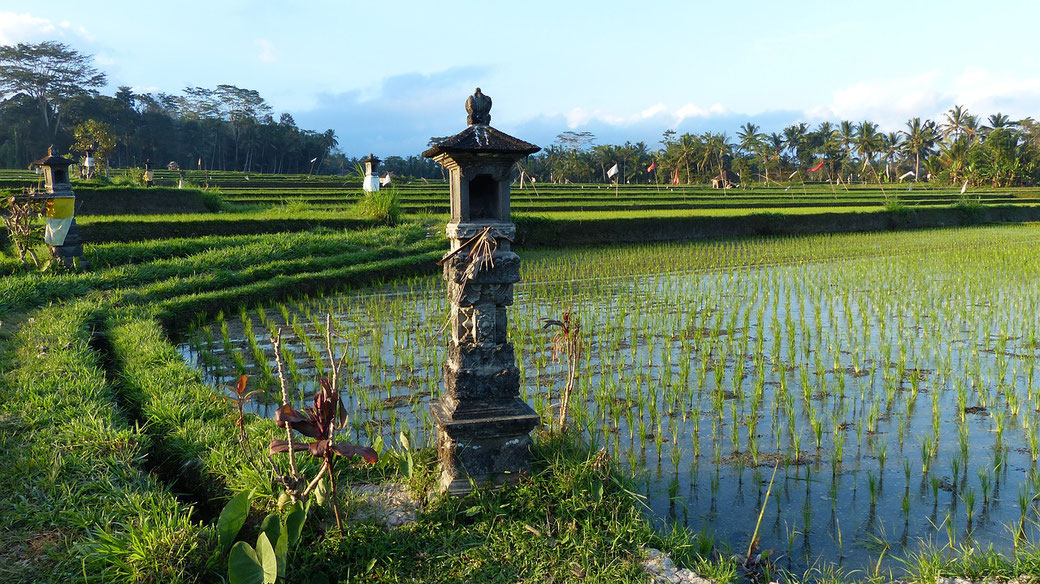
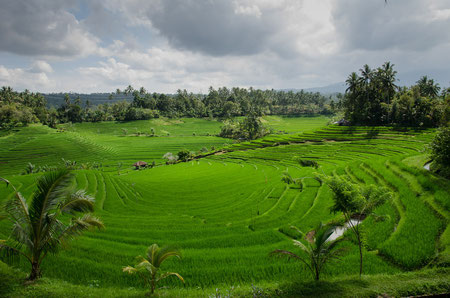
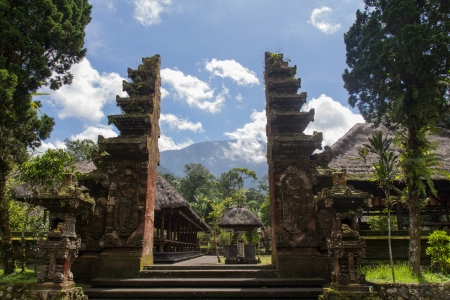
Balicasa Properties (Friday, 18 August 2023 21:37)
Dear Raj Kumar.
There are talks about getting a golden visa for Indonesia ( https://www.channelnewsasia.com/asia/indonesia-golden-visa-policy-high-skilled-talent-investment-foreigners-3671871 ). However, these visas will be for maximum 5 or 10 years. It is not including an Indonesian citizenship as far as we know. Applying a citizen ship for Indonesia will be a different process.
Raj Kumar (Thursday, 17 August 2023 20:55)
I can buy villa.
Can I get citizenship of Indonesia.